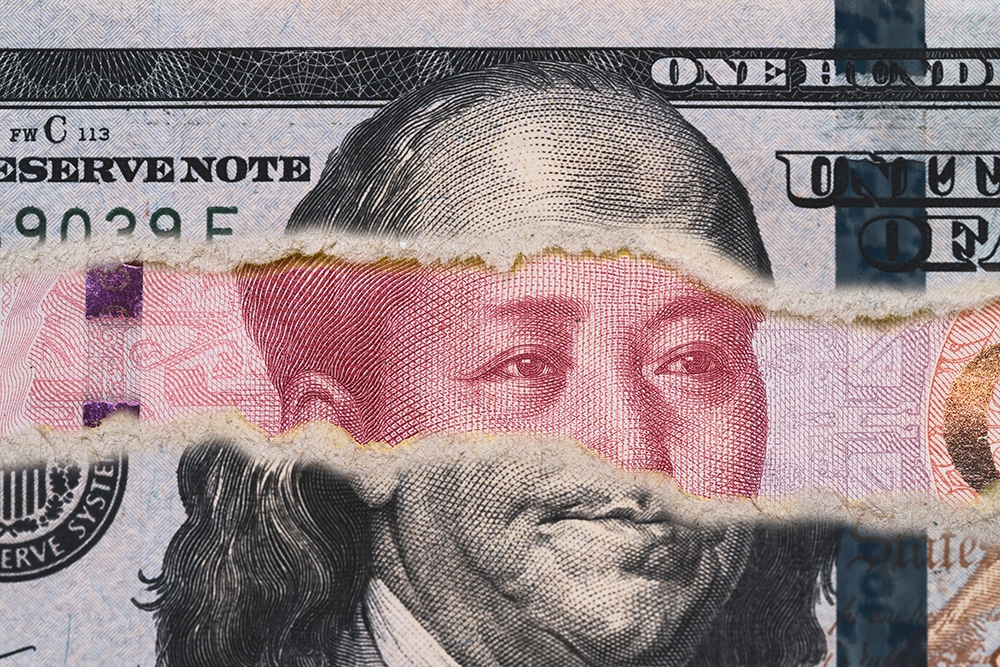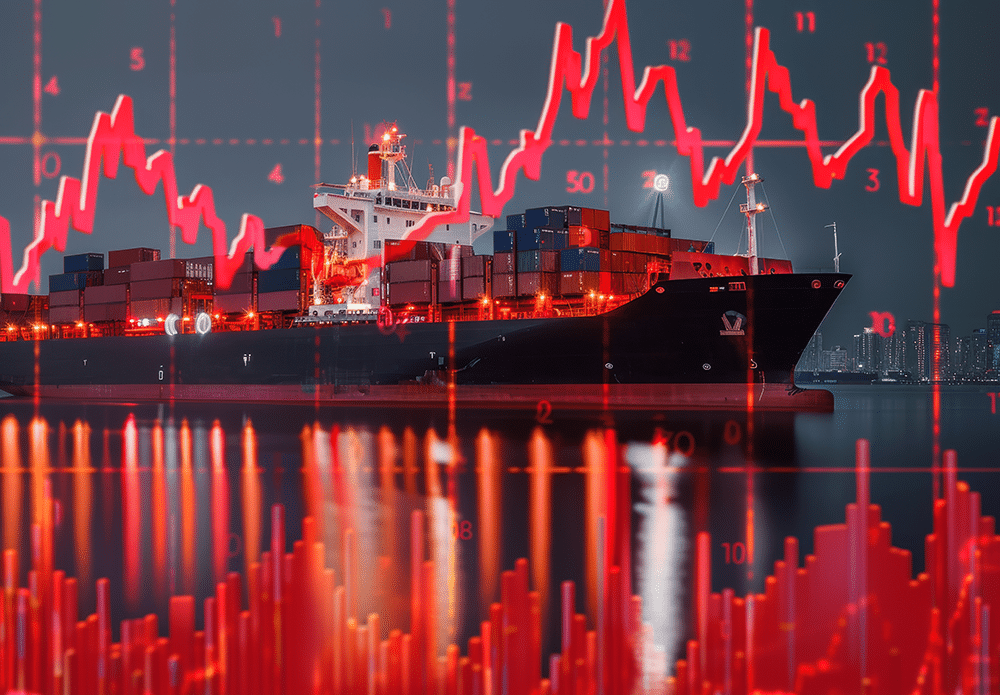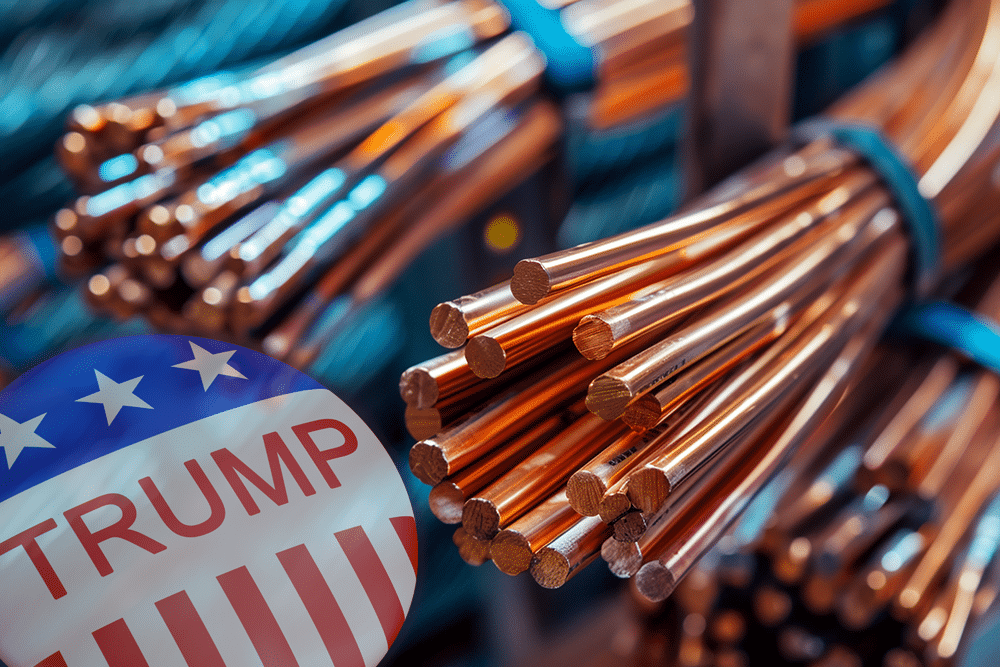The so-called “Trump Tariffs” imposed by U.S. President Donald Trump caused uncertainty in the global metals market earlier in the week. Though he did pause imposing tariffs on goods from Mexico and Canada for one month, there could still me plenty more chaos down the road.
The current tariffs include a 25% levy on goods from Canada and Mexico, as well as a 10% levy on imports from China. But in a tit-for-tat move, China responded by imposing a 15% tariff on the import of U.S. coal and liquefied natural gas on Tuesday.
This came alongside additional 10% tariffs on crude oil, farm equipment and some autos. According to reports, those levies will go into effect starting February 10. For now, markets and buyers have little else to do but watch and wait.
Prepare for low material availability with weekly, lucrative metal market insights. Subscribe to MetalMiner’s weekly newsletter.
Trump Tariffs Hit Global Markets, Lead to Swift Retaliation
According to Reuters, China’s Commerce Ministry and Customs Administration separately announced export controls on key metals essential for electronics, military equipment and solar panels. Meanwhile, China’s newly announced 10% tariff on U.S.-made electric trucks could impact future sales of Elon Musk’s Cybertruck, a niche Tesla offering the brand is currently promoting across China.

Experts are near-unanimous that there would be a far-reaching fallout of both the Trump tariffs and the subsequent retaliations. Many agree that the effects will impact base metal prices, trade dynamics and even global economic stability to an extent. When markets opened Monday, base metal prices on the London Metal Exchange saw a significant drop, while the prices of metals like zinc, copper and steel also traded lower.
Worried about the effects of potential Trump tariffs? Get valuable market trends, price alerts and commodity news, supporting your business in mitigating the impact of increasing metal prices. Register for MetalMiner’s free weekly newsletter.
Gold Had a Good Day in Response to Tariffs
There was at least one metal that managed to move north. Gold prices topped their all-time high on February 3, 2025, following concerns of inflation hurting the U.S. economy. Reuters reported that spot gold rose 0.8% to $2,818.99 per ounce by 01:45 p.m. ET after hitting a record of $2,830.49 earlier in the session. Meanwhile, U.S. gold futures settled 0.8% higher at $2,857.10.

In the wake of the tariffs, fears of a new global trade war also adversely affected metal and mining company stock prices on some of the global stock exchanges. All of this only serves to underline the volatility that such tariff announcements can introduce to worldwide commodities markets.
MetalMiner Insights covers price points, correlation charts and price forecasting for a full suite of industrial and precious metals. See our full metals catalog.
How Will Tariffs Affect China?
Compared to his first time period as U.S. President, experts say Trump has been a bit kinder to Beijing this time, leaving the room open for further negotiations. Still, the imposition of tariffs could affect global markets in several key ways.
- Exports – A percentage of China’s metal exports remain earmarked for the U.S., meaning Beijing will now have to find alternate markets.
- Production Costs – Increased tariffs mean more costs for manufacturers who rely on these metals for production. This, in turn, may result in higher consumer prices.
- Market Dynamics – Price cuts brought on by Trump tariffs could negatively impact Chinese metal producers by squeezing their profit margins.

While China is still emerging from a long holiday due to the New Year, its commerce ministry has countered the U.S. administration’s move by promising “corresponding countermeasures.” The ministry announced that it would be filing a complaint with the World Trade Organization in addition to announcing retaliatory tariffs.
Still, as one of the biggest consumers and producers of metals like steel and aluminum, China will certainly see impacts from the U.S. president’s decision.
Analysts Predict Widespread Economic Effects
Many experts believe that the impact of the tariffs will not be limited to China alone, but will broadly bruise global trade dynamics, particularly in North America. Nearly 75% of annual exports from Canada and Mexico are to the U.S., including for metals like copper, aluminum and zinc.
America also relies quite a bit on the import of auto parts from these two countries. The retaliatory measures and tariffs are bound to push costs for manufacturers in the U.S., particularly for automobiles. If companies decide to pass these increased costs on to consumers, it will have a negative impact on inflation.

Most experts anticipated China’s counteroffensive to Trump tariffs. The main question on everyone’s mind was how strong the retaliation will be. An earlier report by CNN.com stated that the prevailing belief in China was that Trump might be waiting for the results of a broader investigation into U.S.-China economic and trade relations, which he initiated through an executive order on his first day in office.
China Has Already Redirected Some Exports
A report in the South China Morning Post quoted economists from ING as saying that the initial 10% Trump tariffs would have a “very modest” impact on China’s economic growth. However, they noted it would further pressure low-margin exports to the U.S. and likely push some out of the market. These experts also pointed out that sectors most at risk are those with readily available alternatives, such as textiles, certain electronics and machinery.
However, with tariffs in place for the past seven years, companies have already redirected many price-sensitive and easily replaceable exports to other markets. In fact, some experts believe that China will start shifting some of its metal exports meant for the U.S. to other nations. What effect the new Trump Tariffs may have on this remains a mystery.
Expert sourcing strategies, right at your fingertips. The Monthly Metals Outlook report is your guide to sourcing success and mitigating any volatility from the recent Trump tariffs. Check out a free sample copy.


